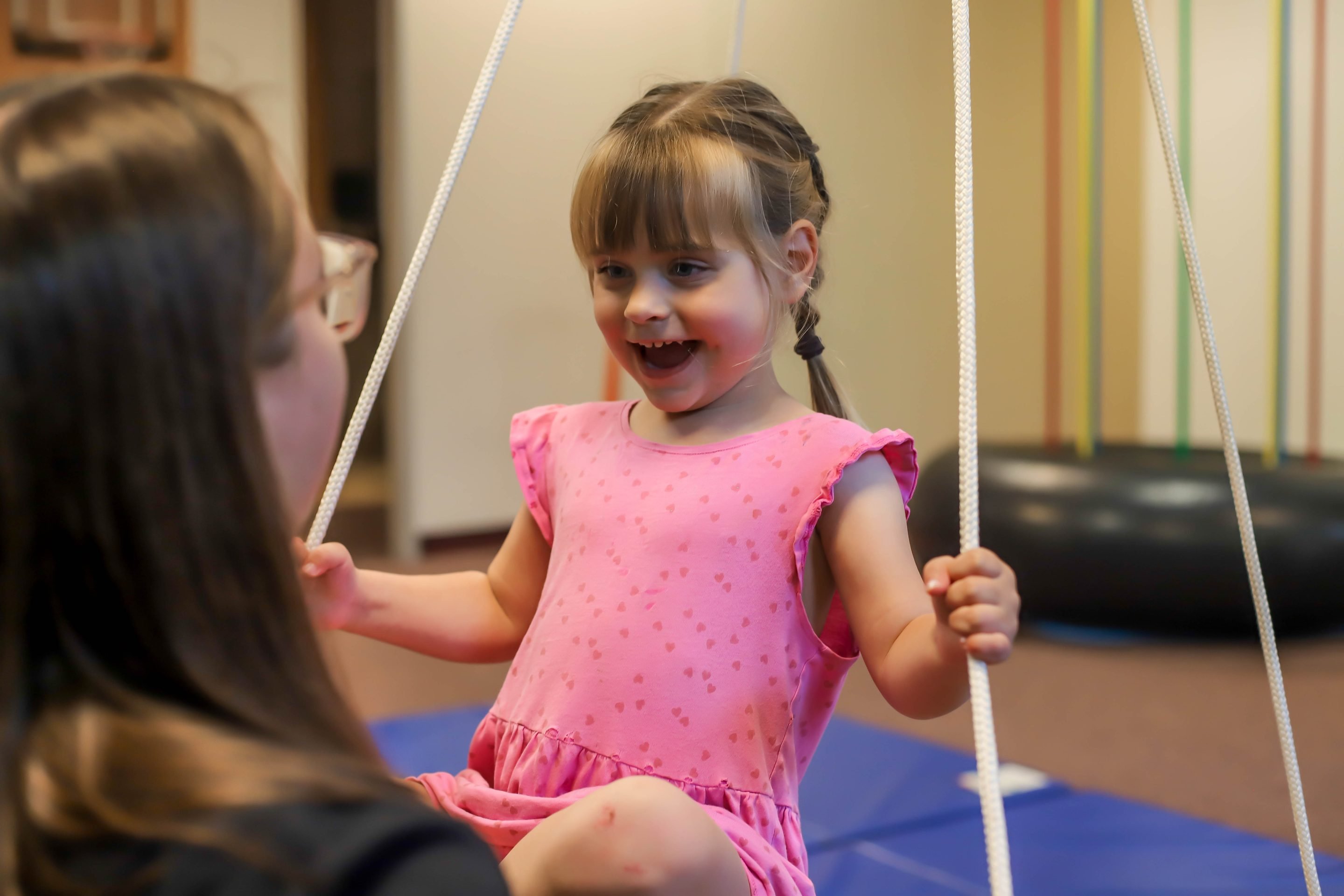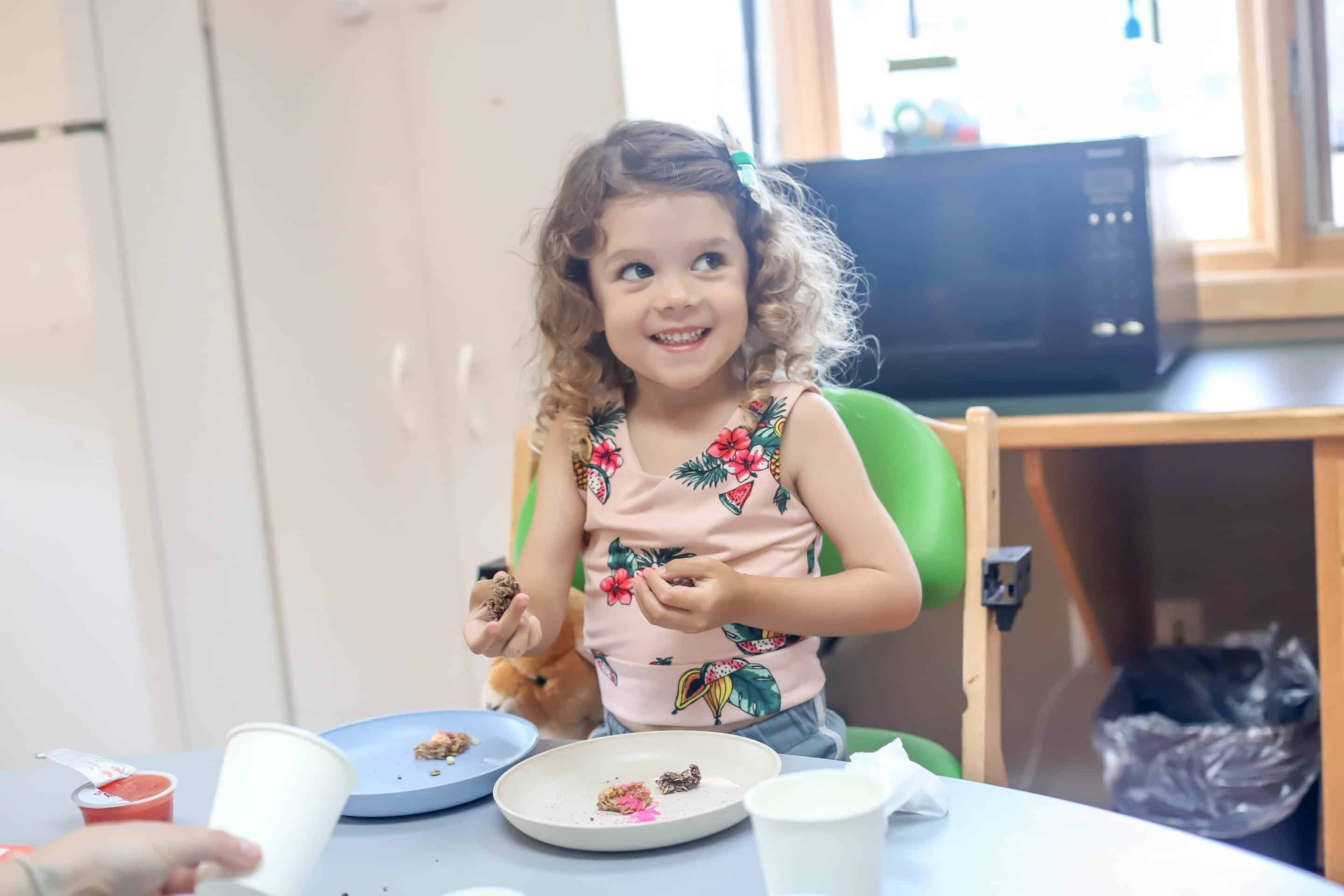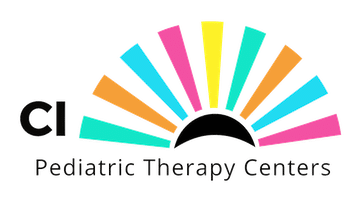Speech Therapy
Pediatric Speech and Language Therapy
Located across several convenient locations in the Madison and Wausau areas, CI’s team of nationally certified speech-language pathologists (SLPs) are experts in improving communication and language skills in the pediatric and young adult populations. By staying up to date on the latest research in the field, our SLPs combine evidence-based practice with a passion for making speech therapy fun, functional, and goal-oriented. Whether your child’s interests include cars, cats, or castles, we are dedicated to infusing interests into each and every speech therapy session, resulting in high client engagement and progress toward goals.
We look forward to meeting with you at one of our Madison or Wausau area locations for an initial evaluation to get to know your child, identify their strengths and growth areas, discuss your family’s functional goal areas, complete standardized assessments, and determine the most appropriate frequency for services.

What is Speech Language Therapy?
Speech language therapy, sometimes better known as speech therapy, is provided by speech-language pathologists (SLPs). Speech therapy aims to prevent, assess, diagnose, and treat speech, language, social communication, cognitive-communication, and swallowing disorders in children and adults.
What Does Speech Therapy Treat?
Speech-language pathologists (SLPs or speech therapists) treat a variety of difficulties related to communication which may include:
Speech Sound Production
- Refers to the way a child says a word, or the way the word is produced. This directly relates to a child’s intelligibility level, or the amount that they are understood by their communication partners. Speech therapy addresses: articulation, phonological processes, and childhood apraxia of speech. The ultimate goal is to decrease communication breakdowns and increase communicative success.
Oral and Written Language
- Refers to the meaning of the word. Language therapy can address receptive language, how language is being understood by the child, expressive language, how language is being used by the child, or both. Language therapy encompasses: building vocabulary and semantics, teaching grammar and syntax (in both spoken and written forms). This applies across the lifespan from late talkers into early adulthood
Social Pragmatic Communication
- Refers to the way a child communicates socially. Neurodiversity-affirming therapy targeting social skills often encompasses building skills such as self-advocacy, self-determination, and perspective taking.
Fluency and Stuttering
- Refers to the normal flow of speech. Therapy for fluency gives individuals the tools necessary to express themselves in a confident manner in order to reduce feelings of frustration, embarrassment, and self-consciousness.
Complex Communication
- Refers to individuals who may need to use alternative or augmentative methods of communication (AAC) if their verbal speech is limiting their ability to communicate their thoughts, wants, needs, and ideas. May be associated with a variety of underlying conditions or disorders such as autism, traumatic brain injuries, intellectual disabilities, cerebral palsy, or genetic syndromes. SLPs work to determine the most efficient ways to communicate, which may include high tech communication devices, pictures, sign language, vocalizations, or any combination of the above.
Feeding and Swallowing
- Difficulties may be related to reduced oral intake of food, or a reduced variety of food in a child’s diet due to a variety of factors including picky eating, sensory aversions, and oral-motor and swallowing difficulties. Feeding therapy is individualized to each child and may include encouragement of exploration of food in a safe, low-pressure environment, and teaching the oral motor skills needed for a safe and effective swallow. Your child may be seen by an SLP or OT for feeding therapy, depending on their specific treatment targets.
Literacy
- Refers to an individual’s ability to access, generate, and gain knowledge from written language. Often recognized as “reading and spelling”, literacy comprises five core components, which include: vocabulary, reading comprehension, phonological awareness, phonics, and fluency. Therapy is led by a speech and language pathologist (SLP) who has received specialized training in literacy, such as Orton-Gillingham, Structured Word Inquiry (SWI), or other evidence-based approach. Ideal for children with dyslexia or other learning, language, or phonological disorders, this therapy is individualized to each client and uses a strengths-based approach to facilitate increased confidence and competence with reading and spelling
Treatment Methods:
Our speech therapists use a variety of techniques and strategies tailored to each individual client to help improve their overall ability to effectively and efficiently communicate with their communication partners across environmental settings. CI’s speech therapists use their knowledge of treatment methods, up to date research, and evidence-based interventions to tailor a treatment plan that is specific to each child’s needs. Specialized treatment techniques may include:
- Dynamic Temporal and Tactile Cueing (DTTC)
- Hanen It Takes Two to Talk
- Language Acquisition through Motor Planning (LAMP)
- Pragmatic Organization Dynamic Display (PODD)
- PROMPT
- Orton-Gillingham
- Sequential Oral Sensory Approach to Feeding (SOS)
- Get Permission Approach to Feeding
- Tethered Oral Ties (TOTs)
- AEIOU: Integrated Approach to Feeding
- Myofunctional Therapy
- Natural Language Acquisition (NLA)
- Strategies for Selective Mutism
Speech Therapy for Autism
The CI team provides speech therapy services for clients of all ages diagnosed with autism. Whether a client was just recently formally diagnosed or has had a diagnosis for years, CI therapists are Neurodiversity affirming. CI’s team of speech-language pathologists utilize neurodiversity-affirming approaches to guide goal-setting and treatment. Neurodiversity- affirming approaches utilize the idea that neurodivergence itself is not defined as a flaw or something that needs to be “fixed,” “corrected,” or “normalized.” Rather, clients’ individual strengths and uniqueness are celebrated while creating speech therapy goals that are meaningful to them.
Personalized Speech Therapy Strategies for Autism
SLPs are the only provider that receives specialized training on in-depth language and social skill assessment for individuals with an autism diagnosis.
Speech therapy at CI does not seek to teach clients how to act in a neurotypical manner but rather celebrates the unique qualities they possess while supporting client and family goal areas. Whether a client wants to learn to better self-advocate and communicate their needs to others, set personal boundaries, or build stronger relationships, personalized speech therapy goals specific to the client are vital to motivation and progress! Speech therapists at CI do this through:
Structured Peer Plays:
Engagement and connection with other clients at CI is at the forefront of treatment. This includes finding peers who have similar interests and strategically setting up speech sessions to target incidental situations that foster client insight and progress towards meaningful goals, not just hypothetical practice! Hands on learning and practice is key to navigating and learning about social communication.
Their Knowledge of Gestalt Language Processing (versus Analytic Language Processing):
Research shows that the majority of individuals with autism are also gestalt language processors, making knowledge in this type of development of language vital to clients and making communication progress. Many of CI’s speech therapists are formally trained in the Natural Language Acquisition (NLA) framework and are knowledgeable about progression through various stages of language acquisition for gestalt language processors. Traditional therapy used for analytic language processors does not work for gestalt language processors and our speech therapists are knowledgeable about the approach that does work! More information about Gestalt Language Processing can be found in this blog post.
Use of Augmentative & Alternative Communication:
The overarching purpose of AAC is to increase a child’s ability to communicate their thoughts, wants, needs, and ideas. We all communicate through a variety of means, including spoken words, gestures, and nonverbal language. There are many positives to using AAC including: enhanced communication, inclusion within conversations, independence, and reduced frustration. Speech therapists are experts in AAC, and CI’s speech therapists are able to support AAC use in their speech therapy sessions.
Madison Speech Therapy Clinics
CI has many convenient locations for families to receive speech therapy services throughout the Madison area as well as a location in Wausau, Wisconsin. Our speech therapy clinic locations have expanded over the years with the aim of serving families right in the communities in which they live. Families are busy and having convenient access to high quality speech therapy is important!
Madison area speech therapy locations include:
- Cottage Grove
- Fitchburg
- Madison with our West Middleton/Madison Clinic
- Middleton with our East Middleton Clinic
- Sun Prairie
- Verona with our Main Street Clinic.
- Waunakee
Ready to Take the Next Step? Contact Us Today
Our speech therapy team is ready to join you and your child on their journey to reaching their maximum potential. Get started by scheduling your free consultation today. You can give us a call to schedule or use our convenient online scheduling option. We look forward to meeting you and your child.
Pediatric Speech Therapy FAQs: Answers for Parents
At what age should a child start speech therapy?
At CI, we see children as young as 1-1.5 years old all the way up to young adulthood. Providing your child with early intervention allows for significant growth at a critical period in your child’s development. Reach out as soon as you have concerns about your child’s speech and language development to complete a free developmental screener or consultation. CI is here to provide you and your child the resources and education needed to reach their maximum potential.
What are common signs my child might need speech therapy?
Speech therapy may be beneficial if your child:
- Rarely attempts to imitate others’ language or actions
- Is not yet using gestures (waving, pointing, shaking head yes/no, outreaching hand) by 1 year
- Has difficulty understanding directions and following routines by 2 years
- Is difficult to understand more than half of the time by age 3
- Is not yet able to communicate their needs in an age-appropriate way
- Struggles to make or keep friendships
- Has challenges speaking fluently
- Has difficulty learning how to read and/or spell
How is a speech disorder different from a language disorder?
Speech – refers to the way a child says a word, or the way the word is produced. This directly relates to a child’s intelligibility level, or the amount that they are understood by their communication partners.
Language – refers to the meaning of the word. Language therapy can address receptive language, how language is being understood by the child, expressive language, how language is being used by the child, or both.
For example, one child may say “ma” and another child might say “mommy” – the speech sounds used in each word are different, but the underlying meaning of ‘mother’ is the same for both of the children.
What causes speech and language disorders in children?
Speech and language disorders can be caused by hearing loss (including recurrent ear infections), congenital conditions, genetic factors, brain damage/injury, and neurological disorders. Oftentimes, the cause of speech and language disorders is unknown.
How often will my child need to attend therapy sessions?
While every care plan and frequency recommendation at CI is tailored to meet the specific, unique needs of each of our clients, children are typically recommended to be seen at least one time per week. Like most skills we learn, consistency in practice leads to greater and more rapid growth. Given this principle, and the current research in the field, there are many times that multiple sessions per week are therapeutically recommended for greatest growth and skill development potential. In addition to scheduled sessions, CI therapists seek to provide home carryover ideas/activities to ensure families are well-equipped to practice skills learned in therapy outside of their scheduled appointment times.
How long does it typically take to see improvement?
Rate of progress is highly dependent on the unique needs of individual clients. Factors that may impact rate of progress may include age, comorbidities, complexities of diagnoses, home carry over, and so much more.
Will my child’s speech issues resolve on their own?
Errors are a common and a totally normal part of a child’s speech and language development! When errors occur in speech sounds they may be referred to as phonological processes or articulation errors. Specific errors with language may include use of the correct tense or conjugation of verbs (i.e., runned for ran) or pronoun use (him vs hims). CI’s speech and language pathologists use norms developed through research, in conjunction with clinical expertise to identify when these error patterns are no longer expected for a child’s age, at which point the child is less likely to resolve these errors without expert intervention.
How can I support my child’s speech therapy at home?
Check out these handouts for lots of ways to support different areas of speech therapy at home!
Are there any apps or tools that can supplement speech therapy?
Language development is complex! Your child's speech therapist can make personalized recommendations based on your child's needs and learning style. We recommend different apps and resources to different kids, as it's not a one-size-fits-all recommendation. A speech therapist can also include ways to interact with your child as they use apps and other tools. Research shows that screen time is most effective for learning when it's "active", that is when a parent or caregiver can interact with the child as they engage in the app or video.
How do I choose a good pediatric speech therapist?
All SLPs at CI are nationally certified through the American Speech and Hearing Association (ASHA). The best pediatric speech and language therapist is going to look different for every child. Here are some things to look for when searching for a provider:
- Is therapy fun for your child? Not only is play a more enjoyable way for children to learn, but there is growing evidence that children actually learn best through play! CI therapists are experts at creating innovative ways to incorporate your child’s interests into their therapy sessions to increase engagement and subsequently increase progress toward their goals!
- Are the child’s and their caregiver’s thoughts/concerns being heard? At CI, we know that family involvement is a key component of a child’s progress in therapy. When the people they spend the most of their time with are involved in the process, your child is able to carry over the learned skills into their natural environments We do this by: including family members in therapy sessions, directly teaching them the skills needed to reinforce the skills at home, and providing a summary of the session, which often includes home carry over strategies, at the end of each session
Is speech therapy covered by insurance?
CI is in network with many insurance providers. Speech therapy is covered by some insurance policies. Oftentimes that coverage depends on the diagnosis we are treating. It is important to know if your insurance policy has any exclusions related to the area for which you are seeking treatment (e.g., exclusions related to learning disabilities or developmental delays). It’s always important to confirm coverage and plan specifics with individual insurance providers. We love to collaborate with families, and our billing team can support you as you investigate and help explain your coverage and benefits.
How do speech therapists collaborate with schools and teachers?
Given your permission, your child’s speech therapist will communicate with their school and teachers to collaborate, problem solve, and work together to best meet your child’s needs.
What’s the difference between a speech therapist and an occupational therapist?
Speech language pathologists are specialists in communication and treating challenges that impact communication. Occupational therapists are experts in promoting functional participation through the therapeutic use of meaningful everyday activities (occupations!). Collaboration is highly valued at CI. Our speech language pathologists and occupational therapists can work closely with one another to promote carry-over of skills and may address challenges, such as social skill challenges, through their respective lens.
What’s the difference between speech therapy and applied behavior analysis (ABA)?
SLPs receive special training on communication and feeding. They treat individuals from many treatment lenses, often identifying specific factors that might be impacting a person’s communication or feeding difficulties. SLPs use a variety of treatment techniques based on the underlying causes of these challenges. ABA providers exclusively utilize a behavioral lens to teach and shape different behaviors and developmental skills. They use applied behavior analysis as their primary treatment technique for all goal areas. SLPs and ABA providers can work in tandem to support clients.
Can speech therapy help children with autism?
Yes! Speech therapy can support children with autism in many ways. SLPs receive specialized training on in-depth language and social skill assessment for individuals with an autism diagnosis. Speech therapy at CI does not seek to teach clients how to act in a neurotypical manner but rather celebrates the unique qualities they possess while supporting client and family goal areas. Whether a client wants to learn to better self-advocate and communicate their needs to others, set personal boundaries, or build stronger relationships, personalized speech therapy goals specific to the client are vital to motivation and progress!
How can I track my child’s progress in speech therapy?
Communication and collaboration with families is at the forefront of CI’s care. Before and after each session, you will receive verbal updates on session activities and progress from the treating therapist. Families are always welcome (and encouraged!) to join sessions as well. Goals created at the time of the evaluation span 3 months, at which point they are updated. The treating therapist will go through progress and new goal areas with you to ensure you know what your child is working on and what progress they have made.

Check out our podcast to learn more about speech therapy at CI along with some helpful tips and strategies to use at home.
